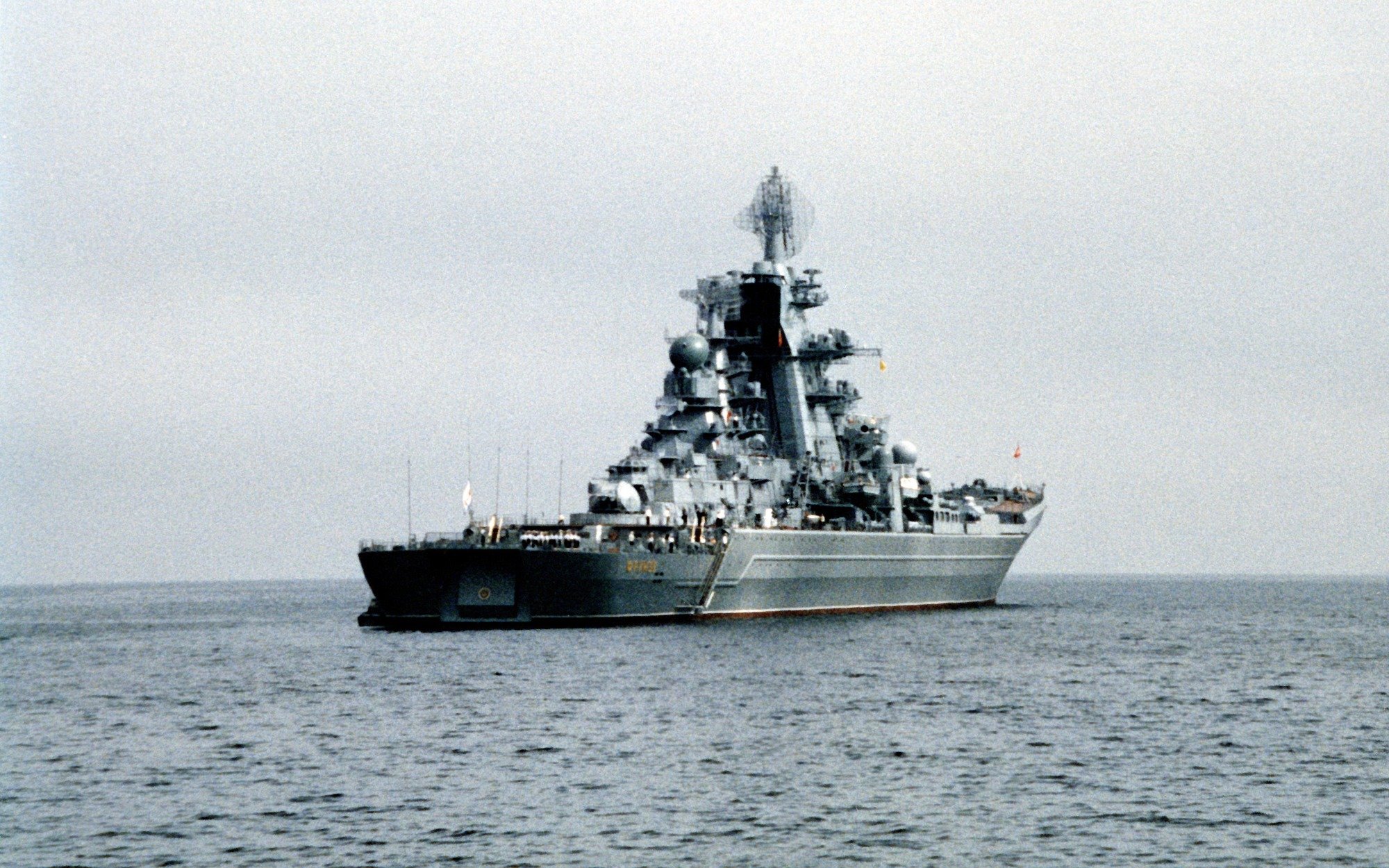Russia's Aircraft Carrier and Battlecruisers: Wasted Billions of Dollars in 'Rust'
Russia's Kirov-class battlecruiser and its only aircraft carrier, Admiral Kuznetsov, have become national embarrassments due to their outdated and inefficient designs.
4 Points You Need to Know: Russia's Kirov-class battlecruiser and its only aircraft carrier, Admiral Kuznetsov, have become national embarrassments due to their outdated and inefficient designs.

-Despite their failings, Moscow persists in keeping these platforms operational out of pride and a desire to maintain the image of a great naval power.
-Historically struggling with surface warships, Russia's attempts to build and sustain a reliable aircraft carrier fleet have proven costly and ineffective.
-Rather than retiring these deteriorating vessels, Russia continues to fund their upkeep, risking not only national humiliation but potential disasters, especially given the nuclear power of the Kirov-class.
Kirov-Class and Admiral Kuznetsov: Symbols of Russia's Naval Struggles
The Kirov-class battlecruiser and Russia’s only aircraft carrier, Admiral Kuznetsov,are massive embarrassments for Russia on the world stage. Despite the obvious humiliations that these failed platforms offer the Russian Navy, Moscow refuses to simply put these systems out of their misery by retiring them. It strains credulity that a supposedly self-respecting great power, like Russia, would want these systems around to force others to question their self-styled greatness.
Ego and pride are powerful motivators.
Russia has dreamed of becoming a great naval power since the days of Peter the Great. Moscow has fantasized of building great fleets of warships to challenge those belonging to the maritime powers. Yet geography has conspired against Moscow. Russia is a mostly landlocked country with but four warm water ports – only one of which, Vladivostok, is within Russia’s contiguous borders.
As a result, Russia’s maritime traditions are limited.
As I have noted in previous writings at this site, Russia does have a mostly successful history of being a submarine power. But its luck with surface warships – notably aircraft carriers – is awful. Recent reports from Moscow indicate that Russian naval planners are committed to eventually building at least four aircraft carriers.
Yet Russia’s miserable experience in the last 70 years of trying to develop reliable aircraft carrier capabilities should have by now dissuaded them.
Unbelievable Costs
The costs of building reliable aircraft carriers, managing them, maintaining them, and then maintaining the carrier’s arsenal of warplanes should not be underestimated. Even the British Royal Navy, once the world’s greatest global naval force, is struggling to maintain the airwings on their two flat tops.

And like the United Kingdom, the Russian Federation is in no condition to engage in vanity projects, such as building an aircraft carrier fleet.
Which brings us back to the flops that are the Kirov-class battlecruiser and the Admiral Kuznetsov. These systems are old and they cannot be updated. Especially in the case of the smog-spewing, barely seaworthy Admiral Kuznetsov. The only reason to have kept these boats in service for as long as the Russians did would be to maintain the capabilities of the Russian Navy for managing such warships. Without these real-world systems being in service, the Russian Navy would not have gleaned real-world experience.
At some point, however, these antiques become a burden for the Russian forces using them. What’s more, they become so antiquated that there is nothing more useful to learn from operating these warships.
And with Russia’s partnerships both with the Indian and Chinese militaries, both of which have developed rudimentary aircraft carrier capabilities, it strains credulity that Moscow wouldn’t simply seek to send its sailors to either of those two navies to do tours aboard those better functioning aircraft carriers.
But pride is a potent factor here. Russia has not only fancied itself a great naval power, but it believes itself to be a dominant one, too. The Russian Kirov-class battlecruiser is a massive, nuclear-powered warship. Admiral Kuznetsov is an actual aircraft carrier, which many believe to be the ultimate symbol of naval power in the world (it certainly is for the Americans).
Unwillingness to Compromise
Both warships are rusting out and are in dire need of mothballing.
Moscow’s leadership clearly believes, however, that the mere existence of these platforms adds to Russia’s prestige. It does not. They not only weaken Russia, but they could also lead to a major humiliation for Russia.
Especially in the case of the Kirov-class battlecruiser with its nuclear reactor. Should this aging platform suffer a catastrophic failure due to age-related decline, it could lead to a nuclear disaster on the level of Chernobyl.
Nevertheless, the Russian Navy persists in funding these useless warships. There is no practical reason for maintaining them. It is only the blind, emotional appeal to some superficial sense of patriotism that has prompted Moscow to sustain these absurdly expensive, inefficient platforms. When he initiated the war against Ukraine, Russian President Vladimir Putin insisted that it was part of a national rejuvenation mission for Russia.
One cannot see how rejuvenating Russia in the killing fields of Ukraine is upheld by sustaining these antiquated systems.
Author Experience and Expertise: Brandon J. Weichert
Brandon J. Weichert, a National Interest national security analyst, is a former Congressional staffer and geopolitical analyst who is a contributor at The Washington Times, the Asia Times, and The-Pipeline. He is the author of Winning Space: How America Remains a Superpower, Biohacked: China’s Race to Control Life, and The Shadow War: Iran’s Quest for Supremacy. His next book, A Disaster of Our Own Making: How the West Lost Ukraine, is due October 22 from Encounter Books. Weichert can be followed via Twitter @WeTheBrandon.
All images are Creative Commons or Shutterstock.
From the Vault
Russia Freaked Out: Why the U.S. Navy 'Unretired' the Iowa-Class Battleships
Battleship vs. Battlecruiser: Iowa-Class vs. Russia's Kirov-Class (Who Wins?)


